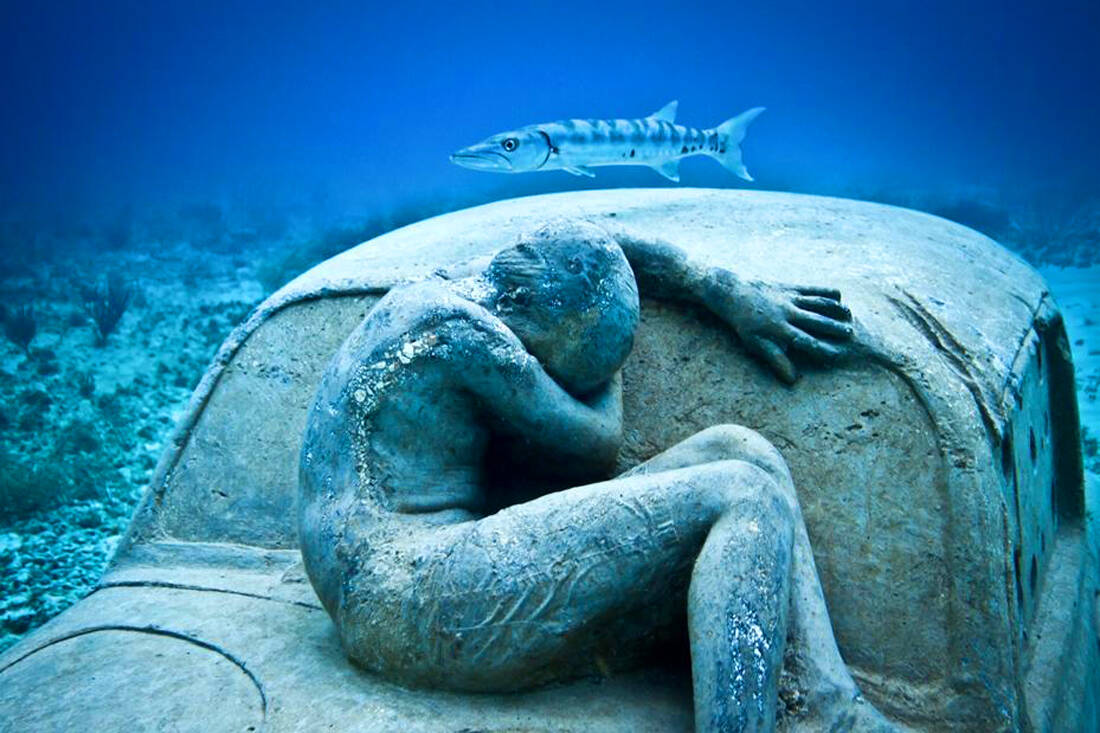The sea has the ability to calm the human eye. The seabed, for those who are lucky enough to have explored it, is a different world. Beautiful world. Nature creates works of incredible beauty. Usually the only thing a person can do is enjoy it.
Unless you are Jason deCaires Taylor. The British sculptor and photographer looks at bottom his own "canvas". The mysterious atmosphere under water is his muse.
His creations are breathtaking. New horizons are opening up. Taylor transports pieces of life on earth, in the aquatic world. It is known all over the world and the only one of its kind, since it is the one that created the most important underwater parks on the planet. He is the one who with every inspiration emphasizes the invisible connection between the earth and the ocean.
British artist Jason Decaires Taylor grew up between Europe and Asia. Born in 1974, he graduated from the London Institute of Arts in 1998. At the same time he trained as a professional diver and practiced it for about 17 years.
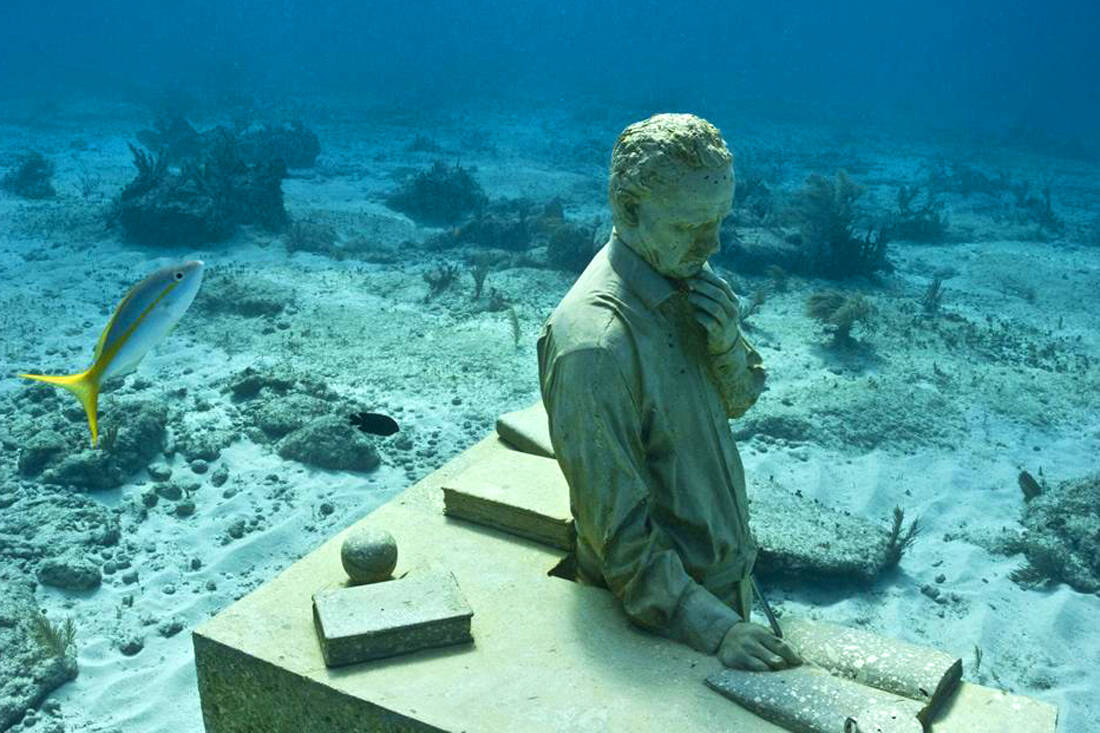
Since then and for the next 20 years or so, he has been systematically exploring the interaction between art, the protection of the marine environment and society.
In 2006 the artist created the world's first underwater sculpture park off the coast of Grenada and his works were listed in the top 25 wonders of the modern world since National Geographic.
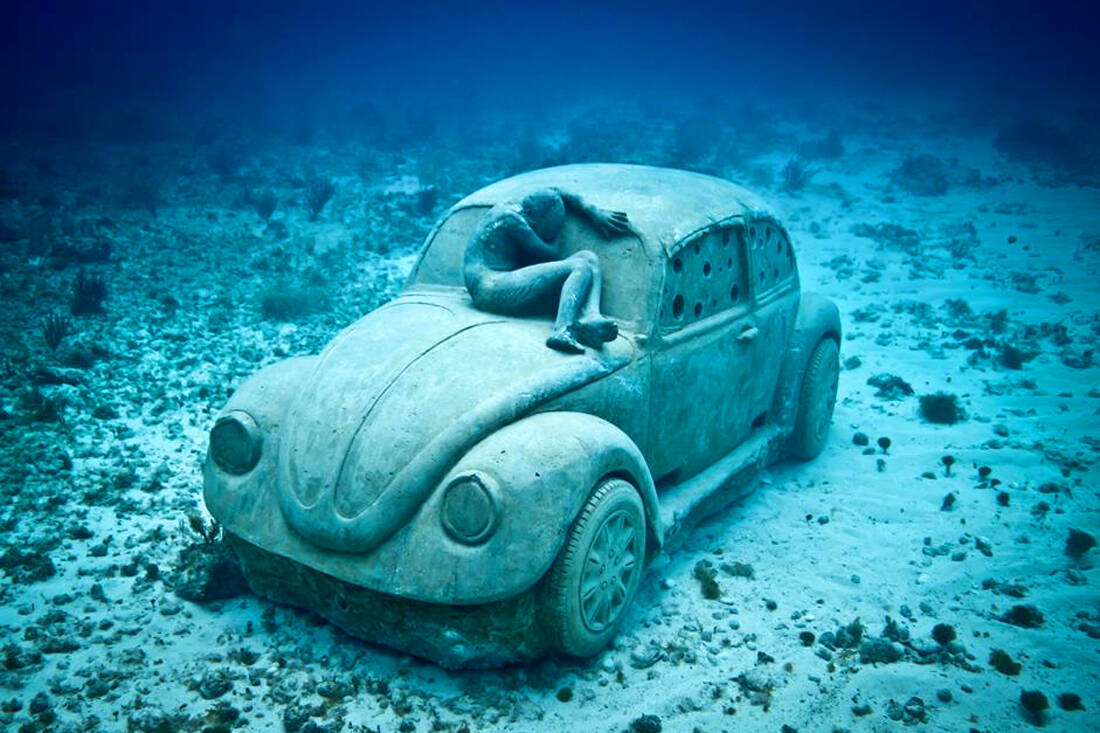
Influenced by developments on land, Taylor gives "flesh and blood" to his inspirations in his laboratory, where he works systematically for a long time in order to achieve the desired result for the same. Then the appropriate underwater locations are identified, that is, where he will "set up" his gallery. He then contacts the local authorities in order to obtain the necessary permits by submitting, inter alia, and environmental studies.
Then Taylor and his associates transport the sculptures to the beach and from there with the use of special cranes are placed carefully and based on the design on the seabed. The rest is taken care of by nature!
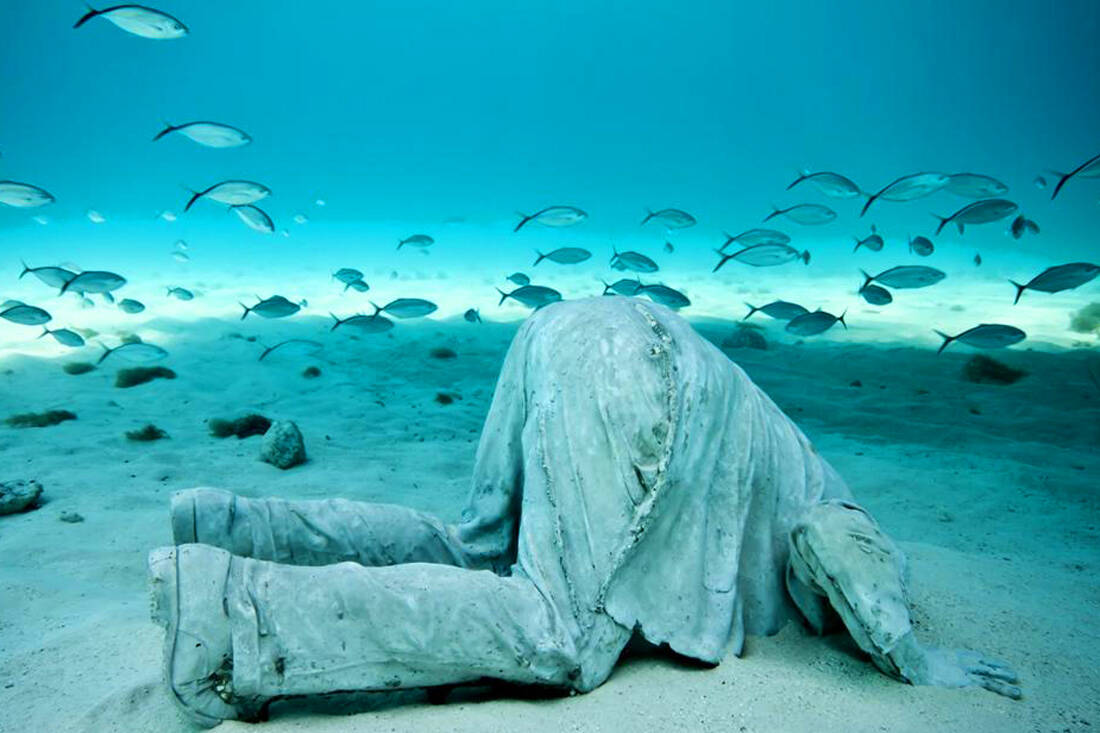
When Taylor is in the phase of creating and installing the project at its bottom sea works closely with marine biologists, while always using materials that are durable, stable and environmentally friendly.
His sculptures are always placed in very specific and well-studied places on the seabed in order to avoid contact with strong currents. In addition, and this has its own value, he always makes sure to place his works on the seabed at the right time for the reproduction of corals in order to maximize their potential impact on the ocean ecosystem!
Taylor's work itself has become part of the ecological movement and it is no coincidence that in 2010, his work was used in a campaign of Greenpeace to raise awareness of global warming ahead of the United Nations Climate Change Conference in Cancun that year.

Jason Decaires Taylor, not unjustly, has been described as a global artist as his works exist at the bottom of many countries. Indicatively we simply mention that some of his most important works have been placed at sea in Cancun at Mexico (2009) located at the "Museo Subacuático de Arte (Musa)", which includes almost 500 statues, created by the locals, in the Bahamas 2014, in Bali, (2016), in Lanzarote (2017 ), in Norway (2018). But they are not the only ones and of course they are not going to stop there.
Already, as it has become known, is in the final phase of its implementation the most cosmopolitan tourist resort of Mediterranean, the underwater museum, which is preparing to open its doors in 2020 in Cyprus and specifically in Αγία Νάπα!
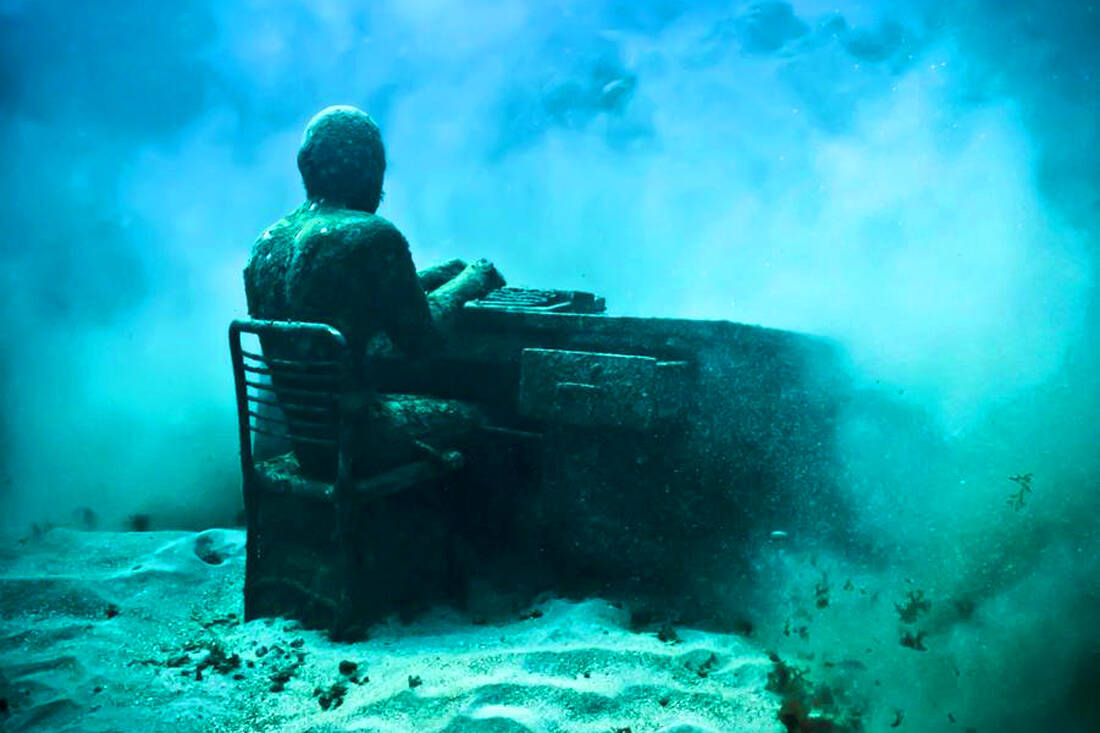
Since we are talking about the works of this great artist, however, special mention should definitely be made of some of them. The first is the so-called "Museo Atlantico" off Lanzarote, the fourth largest island in the Canary Islands.
There, among the other exhibits in the underwater museum, the "Lampedusa Plan" dominates and moves. This is a modern cement version of the famous "Medusa Design" by Teodor Zerico. The work of the British sculptor refers to the tragic, deadly tragedy that cost the lives of about 800 people in April 2015.

In addition, there is the imposing installation of "Rubicon", a project that has a direct reference to the dangers of climate change and the inevitable course of humanity to the point of no return.

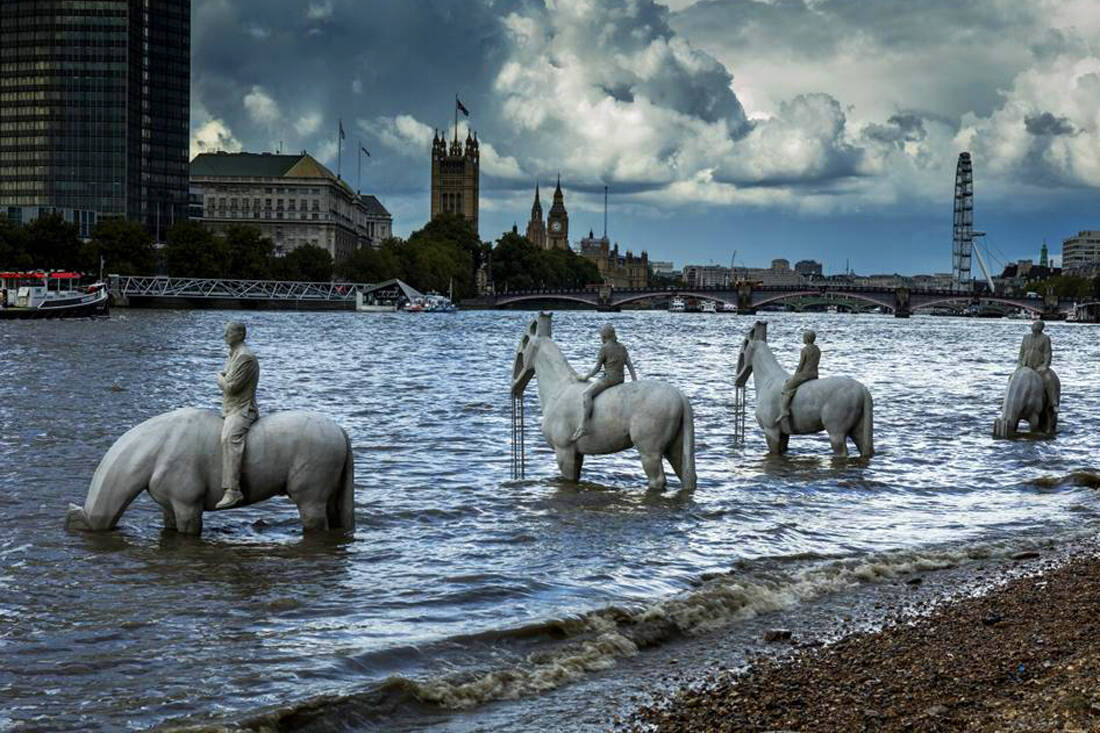
One of Jason deCaires Taylor's most recent creations has been installed in London. These are the "four horsemen of industrial revelation", which is one of his few works that is not a submarine! Ή at least… no follow-up.
How is this done? Taylor had a great idea that makes this work even more mysterious. He studied the area and decided to place his sculptures in such a way that the "riders" could be seen for up to two hours a day on either side of the river. Thames when it has a tide!
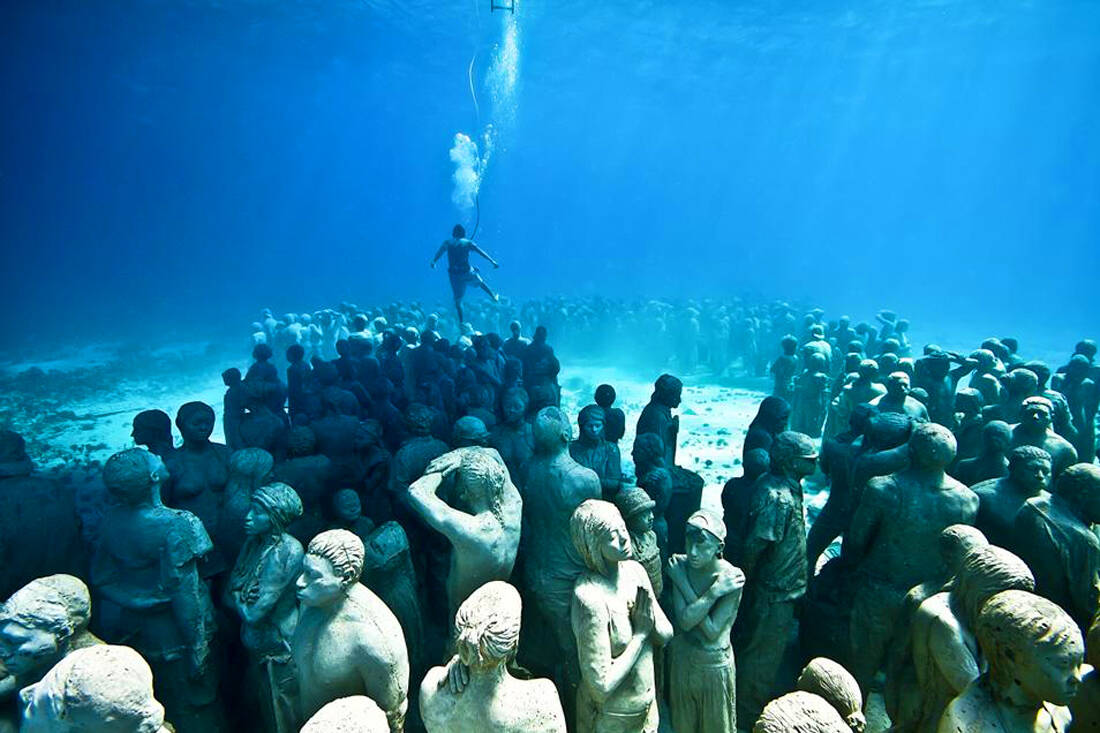
The sculptures include two male figures in the role of businessmen and two children, who symbolize the future generation that will face ecological disaster. They all sit on horses whose heads look like oil pumps.
As Jason deCaires Taylor himself has said, he wanted people to think about her huge problem with this work. climate change and find ways to deal with it and do something to make the world a better place for our children.
